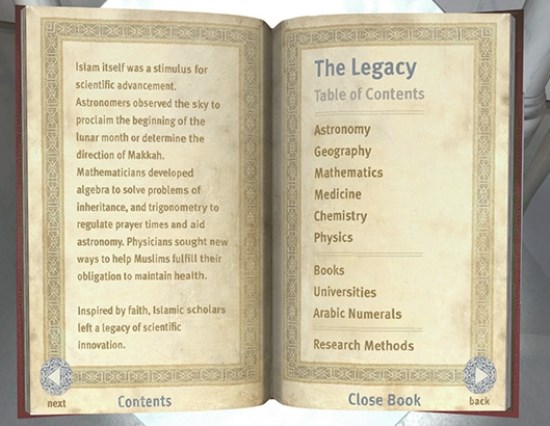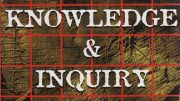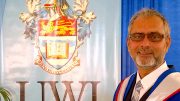Intellectual attempts at identifying defining parameters of Islamic culture have proven to be a complex exercise which is often limited to attempts at isolating points of cultural unity among Muslims from different parts of the world. Realisation of the fact that religion alone cannot be considered the defining parameter of identity had led early scholars to attempt evaluation of the legacy of Islam through a division of its cultural canvas on religious and secular grounds. Understandably such academic pursuits proved to be incomplete and were invariably inconclusive leading to the recent trends which encourage the study of Islam as an aspect of the cultures of regions with sizable Muslim populations.
The cultural achievements of Muslims cannot be attributed to Arab intellect alone as a bulk of the Islamic ethos was built up on contributions made by old and established cultures brought into the Muslim fold. The rapid spread of Islam in its initial stages gave almost no opportunity for cultural development to keep pace with the requirements of an ever expanding sphere of influence. With no other options available, Islamic culture from its nascent stages developed a tendency to absorb elements of other cultures enabling early emergence of a distinct ethos which it could claim as its own. The resulting cultural canvas was a unique blending of the best elements derived from the individual cultural repertoires of Persia, Mesopotamia, Egypt and Spain.
This rapid expansion of the Islamic world within a short span of time also resulted in unprecedented prosperity which in turn provided the catalyst required for intellectual growth. The cosmopolitan spirit of this euphoric period enabled the intelligentsia to capitalize on the new found tolerance which made possible the transference of knowledge on an unprecedented scale. Science and philosophy of ancient Greece and India alike received an enthusiastic reception at Baghdad under the Abbasid dynasty with numerous translations from canonical texts rendered into the Arabic language. This knowledge base along with the teachings of the Quran and numerous original contributions in different spheres formed the basis of Muslim learning which in turn was transmitted over succeeding centuries to Europe precipitating a renaissance in the west.
The golden age of Muslim learning (900 – 1100 CE) produced a bulk of the contributions of Muslims, especially in the field of sciences. The renowned Persian physician Al Razi (Rhazes, 10th century) is credited with collating over a hundred Greek treatises on medicine to which he added his own observations. Ibn Sina (Avicenna, 11th century), another Persian scholar, put together a vast canon in which all then known medical knowledge derived from Greek and Muslim sources was systematically organized. This unique compendium, when translated into Latin in the 12th century, provided western practitioners with their only source of ancient Greek medical knowledge.
Similar progress was made in all fields of learning with notable advances achieved in the fields of astronomy, chemistry and mathematics for which apart from the Greek traditions of geometry of Euclid, Muslims were indebted to India for providing the primary knowledge of arithmetic and algebra. India also provided the Arabs with a system of simple numeric representation which freed mathematicians from cumbersome Roman notations, giving a boost to rapid developments in this field. Unpretentious Muslim scholars always acknowledged their source of information as is evident in their system of medicine being named Unani (Greek) and their numerals Hindsa (derived from Hind). In comparison the west even today insists on referring to the notations as Arabic numerals.
The advancements in astronomy and the introduction of trigonometry are traditionally credited to an Indian influence on Arab learning. The earliest mention of direct interaction is found in the mention of an Indian academic, Kanka, who is said to have been active in intellectual discussions with astrologers of the Caliph Mansur in Baghdad as early as 770 CE. As it is difficult to believe that scientific doctrines could be assimilated at once, especially in alien cultures, it may be concluded that the Indian influence was a constant force over centuries. The interactions therefore seem to have continued uninterrupted first at Baghdad and later at other centres of learning before culminating with the production of Kitab al-Hind, the magnum opus of al-Beruni in 1035 CE which is considered by Prof Irfan Habib as a ‘truly seminal moment when a great scientist of the Islamic world decided to spend his enforced exile in the Punjab to learn Sanskrit and offer an accurate and detailed exposition of Indian sciences, philosophy and beliefs.’
The Muslims, after a short-lived attempt at reconciliation of rationalism and religion, realized that faith and reason often operated on different levels. Coming at a time when al-Beruni’s treatise was gaining popularity among Arab scholars, this paradigm shift bears the mark of a perceptible Indian influence on the Muslim mind.



May Allah reward for sharing such kind of knowledge of Islam that is also enhancing knowledge of people and their practice for seeking right path of Islam.